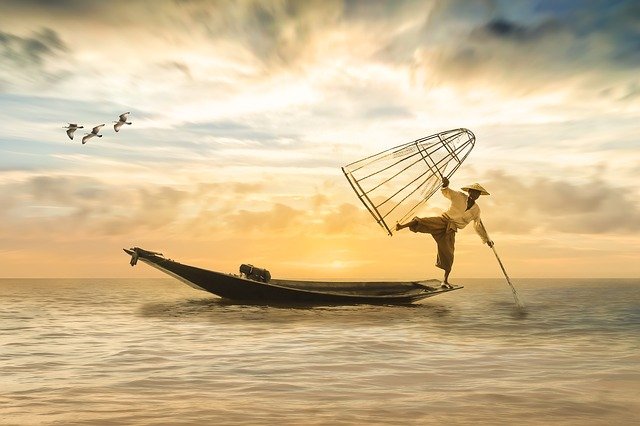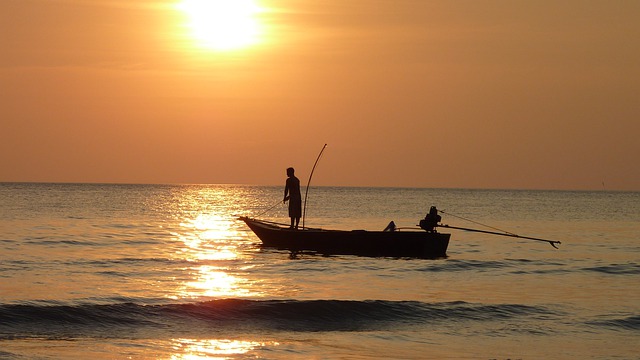Are you interested in learning how should you pass a fishing boat? Every vessel operator is required to perform a number of tasks whenever they pass another boat.
When passing another boat, there are a lot of things that every vessel operator must do.
This entails staying in your lane, maintaining a safe distance from other vehicles, and adhering to all traffic laws.
You will learn everything you need to know about passing a fishing boat from us!
Table of Contents
Why Is It Unsettling To Pass Fishing Boats?
Since there are more people boating than ever, there are new dangers on the water. The likelihood of collisions and accidents increases as more people go boating.
Accident probabilities are elevated when using a fishing boat. This is due to the fact that these boats frequently have lines and ropes in the water, sometimes extending hundreds of yards.
Understand The Basics Fully
It is customary and polite to wait until the other boat has given the all-clear before crossing over lines. You have a duty to uphold safe practices on the water as a boat owner. No matter how skilled you are, accidents can still happen. However, by following the rules—even for seemingly insignificant things like passing another boat—everyone will be safer on the water.
Imagine if there were no traffic laws and everyone was free to choose their own driving style, including the route that their cars and trucks should take. The same is true for boating: chaos would result. by knowing and respecting consistent rules of boating, you can increase overall safety.
Hierarchy For Boats In The Right Way
Our waterways have a hierarchy of right of way just like our roads do. The overall idea is that all boaters should take all reasonable precautions to avoid collisions and crashes with other vessels, including fishing boats.
The boat that is being overtaken by another vessel or a crewless vessel is given the highest priority in terms of the right of way hierarchy. In addition, the passing priority from highest to lowest is as follows:
- A boat that is being passed or crossed by another boat
- Unmanned vessels
- Vessels with limited maneuverability because their gears such as fishing nets are in the water
- Vessels with restricted or limited navigation
- Fishing boats that are actively engaged
- Sailboats
- Powered boats
You can see that fishing boats have priority. It is given precedence over other boats, such as sailboats and powerboats. Because of this, before passing fishing boats, boaters should wait for the “all clear” signal from the boats. However, if the fishing boat is only trolling and not actively engaged, it has the same priority as a powerboat.
Rules On How To Pass A Fishing Boat
Nets and lines are two pieces of equipment that are frequently used on fishing boats. There is no place in the water where these boats can go where they want. They are restricted to a limited number of lines on waterways and are not permitted to cross those lines. Unless they have sent signals and obtained the fishing boat captain’s permission, other boats are not permitted to cross those lines.
When passing fishing boats, there are a few rules that must be followed. These regulations are based on the relative positions of the involved boats and other factors. In this case, it is important to abide by US Coast Guard navigational regulations.
Passing Vessel Should Steer To The Right-hand Side
These regulations state that when passing a boat, the passing vessel must steer to the right. In this manner, the port or left sides of both boats will be passing one another. Additionally, according to the regulations, a boat should pass a fishing boat with a little wake and stay clear of its fishing lines.
Signaling The Captain
Furthermore, according to these regulations, a vessel must signal the captain and wait for an acknowledgment before passing a fishing boat. There are two ways to alert the fishing boat’s captain:
- If the passing vessel is on the right side of the fishing boat, it should use one blast to pass
- If the passing vessel is on the left side of the fishing boat, it should use two blasts to pass
Maintain Full Concentration And Have A Proper Lookout
The vessel must keep its full attention on the passage and keep a proper lookout. This is done to avoid any unforeseen obstacles that might show up on the water as it passes. In order to alert the captain in time, the passing vessel should also have a few of its passengers keep an eye out for swimmers, approaching boats, or other bodies of water.

But avoiding a collision is the most important thing. In order to avoid any collision that could endanger the passengers of both vessels, the captain should exercise all common sense. If passing the boat on a different side would eliminate this kind of risk, it should be done.
Therefore, if following the rules puts the passengers of both boats in danger, the passing vessel’s captain must break them.
Once more, how should a fishing boat be passed? Steer your vessel to the starboard or right side in order to pass a fishing vessel. On the left-hand side, or port side, your boat and the other boat will pass each other in this manner.
Easy Steps To Passing A Fishing Boat
When two vessels are close to one another, one is the “give way” and the other is the “stand on.” It is expected that the give-way will yield to the stand-on in order to prevent collisions and to signal any impending movement or stop. The stand-on, who must also indicate their intentions, is the person who is attempting to pass the give-way. Both of them have an inherent duty to prevent collisions and mishaps.
Waiting For The All-clear
Waiting for your fellow boaters to signal that you can pass is both a safety precaution and a show of consideration for them. Boats typically use their horns to signal in this situation.
Passing On Port
It is customary to pass on the left when passing a car carrying a person. The same thing happens when you pass a fishing boat. The US Coast Guard advises that you should always try to pass the ship on the port side, which is on the left. As a result, you must steer to starboard so that both ships can pass one another on their port sides. You must give one honk to signal your intent to pass this way. They’ll give you a single honk in response when they’re prepared for you to pass.
But occasionally, there is no other choice. You might not be able to pass the fishing boat on that side if its lines are cast in that direction from its port side. You assume the position of the “stand-on” when this occurs. They must receive a signal before you pass them on their starboard side, and you must then wait for the all-clear. By twice honking your horn, you can indicate that you are passing on the starboard side. You are free to pass when they honk back twice.
Going Slowly
Passing should be done very slowly to avoid leaving any wakes. The fishing vessel may be in danger from a strong wake. Someone could be thrown off balance and the boat could be rocked.
Conclusion
How should you pass a fishing boat? You should direct your boat to the right side of the boat or the starboard side in order to pass a fishing boat safely. In other words, the two boats should be passing each other on their port sides, or their left sides.


